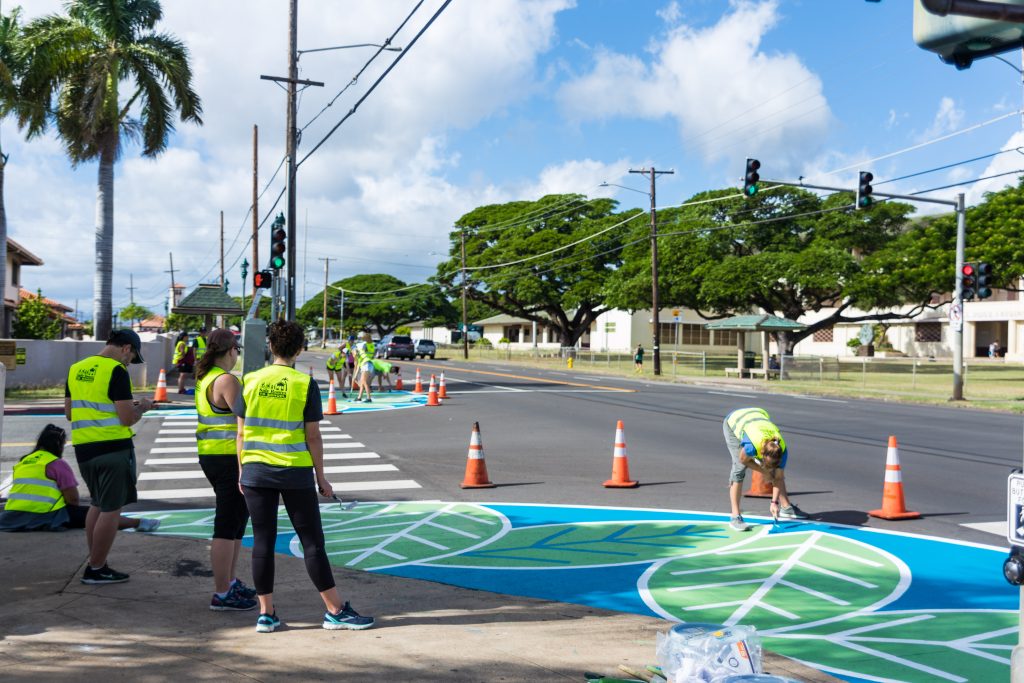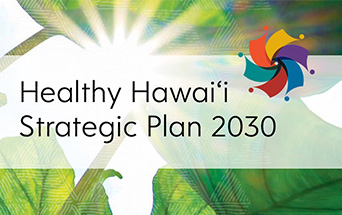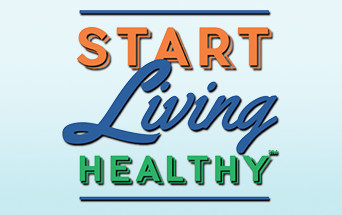Community Design & Active Living
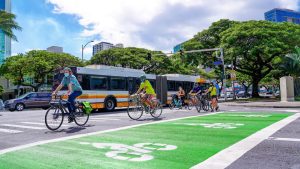 The Chronic Disease Prevention and Health Promotion Division (CDPHPD), Physical Activity and Nutrition (PAN) Section works with advocates, elected officials, state and county agencies, community members, and other partners statewide to create and enhance opportunities for physical activity and active transportation to support and encourage active living. The ways in which our communities are planned, designed and built plays a large part in whether or not there are safe, accessible opportunities for physical activity and access to fresh fruit and vegetables. Buildings, streets, bike and pedestrian facilities, public parks, greenbelts, access to wilderness and nature preserves, the availability of healthy food, proximity of farms and food distribution facilities are all determinants that can influence the overall health of our communities.
The Chronic Disease Prevention and Health Promotion Division (CDPHPD), Physical Activity and Nutrition (PAN) Section works with advocates, elected officials, state and county agencies, community members, and other partners statewide to create and enhance opportunities for physical activity and active transportation to support and encourage active living. The ways in which our communities are planned, designed and built plays a large part in whether or not there are safe, accessible opportunities for physical activity and access to fresh fruit and vegetables. Buildings, streets, bike and pedestrian facilities, public parks, greenbelts, access to wilderness and nature preserves, the availability of healthy food, proximity of farms and food distribution facilities are all determinants that can influence the overall health of our communities.
Active Transportation Policies
The PAN Section works with partners to support and educate the need for policy changes and necessary planning to reshape the built environment and support active transportation. These efforts have led to the successful passage of legislation that improves community design and opportunities for physical activity, as well as to the development of several state and county level plans designed to support active transportation. Tracking the implementation and evaluation of these policies and plans over time will help determine actual impact on active transportation behaviors across Hawaii.
 Complete Streets
Complete Streets
Complete Streets is a transportation policy and design approach that requires streets to be planned, designed, operated, and maintained to enable safe, convenient and comfortable travel for users of all ages and abilities, regardless of their mode of transportation. Complete Streets allow for safe travel by those walking, bicycling, rolling, or riding public transportation. PAN supported the passage of Complete Streets (CS) policies at both the state and county levels and continues to partner on CS implementation efforts.
In 2009, State Act 54 was passed requiring the State of Hawaii Department of Transportation and the county transportation departments to adopt a CS policy that reasonably accommodates convenient access and mobility for all users of the public highways. Act 54 also established a temporary taskforce to review existing state and county design standards and guidelines.
All four counties have also adopted CS policies:
- Kauai County passed CS Resolution 2010-48 in September 2010, and CS Bill 2465.
- Hawaii County’s CS Resolution 171-11 went into effect in October 2011.
- In 2012, Maui County passed CS Resolution 12-34.
- Honolulu County CS Ordinance 12-15 (PDF) that was signed into law in May 2012.
For more information about county complete street efforts, visit:
Quick Builds
Quick build (e.g., Tactical Urbanism, Lighter/Quicker/Cheaper, Pop-ups, Placemaking, etc.) demonstration projects work to improve local communities through low-cost, scalable built environmental interventions to create long term change using paint and simple physical objects that can be cheaply purchased and quickly installed. Quick build projects are intended to deliver improved safety, new transportation choices, and better health outcomes by quickly implementing projects that promote walking, bicycling, and transit through safe, connected routes, and healthy community design. Quick build is a rapid implementation approach to community design that offers a way to gain public and government support for investing in permanent projects and includes treatments for walking, bicycling, and traffic-calming projects.
In 2019, the PAN section partnered with the City & County of Honolulu, Ulupono, Farrington High School, Street Plans, and other partners to implement a quick build project in the Kalihi neighborhood of Oahu. This project enabled the state to test the quick build method and develop a program to encourage residents to identify areas of improvement and work through the process to improve it.
In collaboration with the Healthy Hawaii Evaluation Team from the University of Hawaii at Manoa’s Office of Public Health Studies, the PAN Section conducted a study and provided a comprehensive quick build community engagement evaluation report, Hawaii Quick-Build Projects: Lessons Learned about Community Engagement, of various quick build projects across Hawaii, providing invaluable insight on best practices for community engagement strategies to successful quick build project development and implementation.
Vision Zero
Vision Zero is a strategy to eliminate all traffic fatalities and severe injuries, while increasing safe, healthy, equitable mobility for all. In 2019, Act 134 was passed to adopt a Vision Zero policy and revise the State Highway Safety Council under HRS 286 to focus on developing an action plan to reduce traffic fatalities to zero.
In 2023, the City and County of Honolulu is developing a Vision Zero Action Plan to provide a roadmap to zero traffic fatalities on City-owned right-of-way. The Vision Zero Action Plan will identify a host of actions to create a truly safe transportation system for Oahu.
Safe Routes to School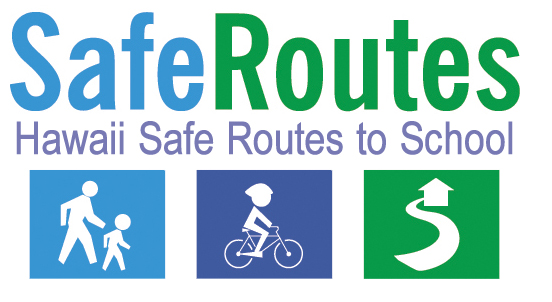
Safe Routes to School (SRTS) policies enhance traffic safety around schools, enable and encourage children to walk and bicycle to school, and make bicycling and walking a safer and more appealing transportation alternative. The PAN Section has worked with advocates and elected officials around the need for SRTS policies and the part health plays in supporting the design of walkable communities with connections to schools, housing, and places of work and play.
During the 2009 legislative session, Act 100 was signed into law. The Act called for the creation and filling of a full-time SRTS Coordinator within the Hawaii Department of Transportation (DOT), and directed DOT on the use of federal SRTS funds.
In 2012, Act 317 was passed, which added a SRTS surcharge on vehicular moving violations to be used to fund SRTS at the county level. These funds are meant to support county SRTS coordinators and provide funding for programmatic and infrastructure changes in the counties that will support SRTS.
In 2023, the State passed into law HB600 SD2 CD2, which directs the DOT to establish a Safe Routes to School Advisory Committee. It requires the Safe Routes to School Advisory Committee to develop a comprehensive, statewide Safe Routes to School Plan, amends the duties of DOT’s Safe Routes to School Program, deposits state highway funds into the Safe Routes to School special fund and appropriates funds from the Safe Routes to School Program special fund.
Hawaii has several state, county and community plans aimed at making communities more pedestrian and bicycle friendly and creating safe opportunities for physical activity. The state Department of Transportation completed its State Pedestrian Master Plan in 2012 to complement the Bike Plan Hawai‘i Master Plan that was updated in 2020 and Honolulu County completed its Oahu Bike Plan in 2019. Each of these plans are currently moving into the implementation stage and partners are coming together to support them.
 Planning Healthy Communities
Planning Healthy Communities
Hawaii has several state, county and community plans aimed at making communities more pedestrian and bicycle friendly while creating safe opportunities for physical activity. TheDOT completed its State Pedestrian Master Plan in 2012, to complement the Bike Plan Hawai‘i Master Plan that was updated in 2020 and Honolulu County completed its Oahu Bike Plan in 2019. In 2022, the City and County of Honolulu completed the Oahu Pedestrian Plan. Each of these plans are currently moving into the implementation stage and partners are coming together to support them
Central Maui Pedestrian and Bicycle Master Plan for 2030
In addition, the Central Maui Pedestrian and Bicycle Master Plan ensures that future planned development accommodates Maui’s diverse mobility needs, including walking and bicycling. A sub-committee comprised of County transportation and planning departments and community advocacy groups will oversee its implementation.
Bike Sharing
 Bike Sharing is an innovative transportation program providing users the ability to pick up a bicycle at any self-serve bike-station and return it to any other bike station located within the system’s service area. The goal is to get more people on bikes and out of their cars, fostering physical activity and helping to combat obesity.
Bike Sharing is an innovative transportation program providing users the ability to pick up a bicycle at any self-serve bike-station and return it to any other bike station located within the system’s service area. The goal is to get more people on bikes and out of their cars, fostering physical activity and helping to combat obesity.
The PAN Section has supported bike sharing in Hawaii since 2008, when they funded and established a pilot project in Kailua, Oahu. Kailua was chosen because of its favorable geographic characteristics: small area, high population density, and short commute distances. The Hawaii B-Cycle program in Kailua showed that bike share could be a viable option in Hawaii and the many lessons learned were used to inform the formation of the Honolulu bike share program.
The success of the Kailua project generated interest in bike sharing statewide. The PAN Section partnered with a large group of agencies and organizations with the intent to launch a bike share program in urban Honolulu. Working closely with the Honolulu City and County Department of Transportation Services, the DOT, and other agencies to improve bike lanes, bikes routes, and other facilities for bikes and cars to safely and effectively share the road.
Bike Share Systems
Biki is Honolulu’s large-scale bikeshare system, brought to you by the 501(c)3 non-profit, Bikeshare Hawai‘i. Launched in late 2017, Biki has 1,300 bikes at over 130 conveniently located self-service “Biki Stops” throughout downtown Honolulu.
Additionally, Hawai‘i Island now has a new viable transportation option that provides economic, health, and ultimate convenience benefits. Bikeshare Hawai‘i Island is now available for residents and visitors alike in Kailua-Kona and Hilo. Bikeshare Hawai‘i Island is a non-profit 501(c)(3) program created through the efforts of the County of Hawai‘i Department of Research and Development, the Mayor’s Active Living Advisory Council, and PATH – People for Active Transportation Hawaii.


